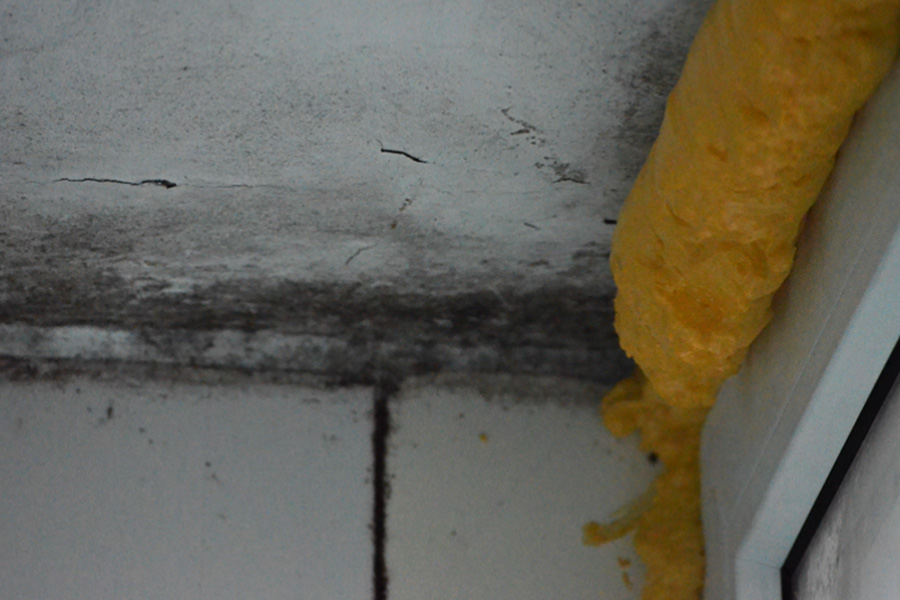
Mould growth is one of the most common household issues in the city-state. The constant humidity and warm weather make local homes ideal environments for mould to thrive. Even after scrubbing and repainting, a mouldy ceiling often reappears weeks later—frustrating homeowners and tenants alike. Understanding why it keeps coming back and how to deal with it properly is the first step to restoring a clean and healthy indoor space.
Why Mould Keeps Coming Back
Mould is a type of fungus that feeds on organic material and moisture. Ceilings are often exposed to high humidity levels and poor ventilation. Once warm air meets a cool ceiling surface, especially in air-conditioned rooms, condensation forms, creating a perfect environment for mould spores to grow.
Another overlooked cause of a mouldy ceiling is hidden water leaks. Leaks from roof tiles, plumbing joints, or air-conditioning units allow moisture to seep into the ceiling plaster. The dampness becomes trapped, fuelling mould growth from the inside out. Even if the visible stains are wiped away, the moisture underneath continues to nourish the fungus. This instance is why mould tends to return quickly after surface cleaning.
Poor ventilation is another contributing factor. Bathrooms and kitchens, where humidity levels are highest, often have limited airflow. Remember, without proper exhaust systems or open windows, steam lingers and encourages mould spores to settle. The same problem occurs in bedrooms where windows remain closed throughout the day, especially when air-conditioners run for long hours without dehumidifiers.
Why DIY Cleaning Often Fails
Many homeowners attempt to deal with mould using household cleaning agents like bleach or vinegar. While these can remove visible stains, they rarely address the root of the issue. For instance, bleach may lighten mould marks, but it does not penetrate porous ceiling materials. The spores beneath the surface survive and spread again once moisture returns.
Over time, repeated cleaning attempts can even damage paint or plaster, leaving the ceiling uneven or discoloured. However, repainting over mould only traps moisture and accelerates regrowth. This situation is why proper mould removal in Singapore involves more than just surface cleaning; it requires identifying and eliminating the moisture source.
Effective Solutions for Lasting Results
The most effective way to deal with persistent mould is to fix the environmental conditions that support it. Start by inspecting your home for potential leaks or condensation points. Once mould appears near air-conditioning vents, it may indicate a drainage or insulation problem. Ensure that exhaust fans for bathrooms are working properly, or consider installing a humidity sensor that activates ventilation automatically.
Another important step in learning how to eliminate mould is controlling indoor humidity. A dehumidifier can keep relative humidity below 60%, which significantly reduces mould growth. Regularly cleaning air filters, maintaining ceiling insulation, and ensuring that cold air does not meet warm, moist air on the ceiling surface also make a difference.
Professional cleaning services are recommended for long-term prevention. Specialists in mould removal use HEPA-filter vacuums, antimicrobial solutions, and sealing agents that destroy spores at the root. They can also conduct moisture testing and infrared scanning to detect hidden leaks before they worsen.
When to Call Professionals
Once your ceiling mould keeps returning despite repeated cleaning, it’s a clear sign of an underlying issue. Persistent patches often indicate internal dampness that only professionals can properly address. Professional remediation not only removes visible mould but also treats affected materials and improves ventilation systems to prevent future recurrence.
It’s especially important to act quickly if you notice black mould or smell a musty odour. Prolonged exposure can trigger allergies, respiratory irritation, or other health concerns. Early intervention not only restores a clean appearance but also ensures that your indoor air remains safe.
Conclusion
Mould that repeatedly appears on ceilings is more than just a surface problem; it’s a sign of moisture trapped within your home. Quick fixes may mask the stains, but the root cause remains until humidity and leaks are properly controlled. Knowing how to eliminate mould effectively often means combining good ventilation, humidity control, and professional treatment. Homeowners can finally put an end to recurring mould and maintain a cleaner, healthier living environment by investing in proper mould removal.
Contact MouldGone and let us restore your ceiling so you can breathe easier in a mould-free home.

